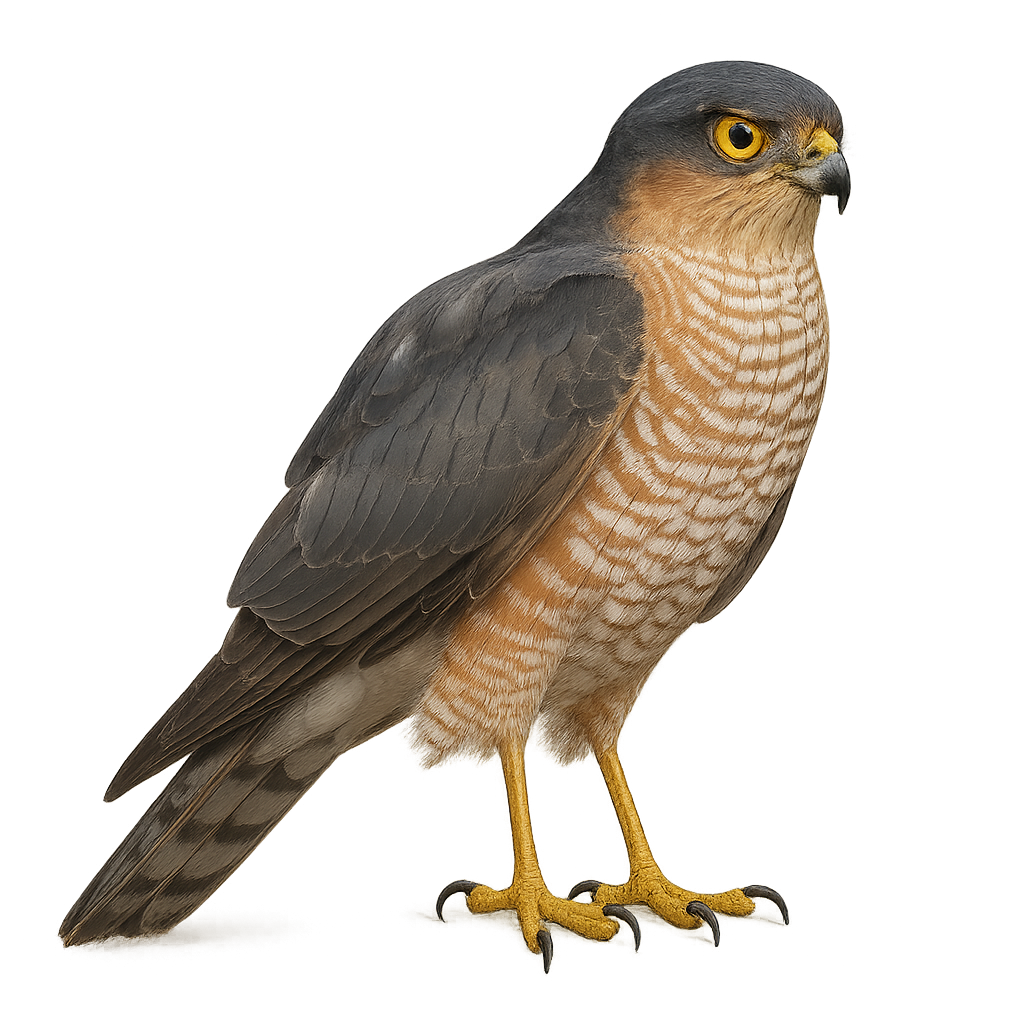Your wildlife photography guide.
Explore the european sparrowhawk in detail, study its behavior, prepare your shots.
Where to observe and photograph the european sparrowhawk in the wild
Learn where and when to spot the european sparrowhawk in the wild, how to identify the species based on distinctive features, and what natural environments it inhabits. The WildlifePhotographer app offers tailored photography tips that reflect the european sparrowhawk’s behavior, helping you capture better wildlife images. Explore the full species profile for key information including description, habitat, active periods, and approach techniques.
European Sparrowhawk
Scientific name: Accipiter nisus

IUCN Status: Least Concern
Family: ACCIPITRIDAE
Group: Birds
Sensitivity to human approach: Suspicious
Minimum approach distance: 30 m
Courtship display: March to April
Incubation: 33–35 jours
Hatchings: April to May
Habitat:
Temperate forests
Activity period :
Primarily active during the day, with peak activity in the morning and late afternoon.
Identification and description:
The European Sparrowhawk is a small raptor from the Accipitridae family, easily recognizable by its gray-brown plumage and narrow wings adapted for hunting in forests. It measures about 30 to 40 cm in length, with a wingspan of 60 to 90 cm, and weighs between 150 and 250 g. The male is generally smaller than the female. Its plumage varies depending on sex and age, but adults have bluish-gray feathers on the back and brownish horizontal bars on the belly. The European Sparrowhawk primarily inhabits dense forests and wooded areas in Europe, but it can also be found in urban parks and gardens. This raptor is an excellent hunter, primarily feeding on smaller birds, which it captures in flight after a rapid pursuit through trees. It often hunts using a silent, swift flight technique and is capable of capturing prey in confined spaces. Although the European Sparrowhawk is currently listed as of least concern, it faces threats such as habitat loss, disturbance of its nesting sites, and persecution by humans.
Recommended lens:
300 mm – adjust based on distance, desired framing (portrait or habitat), and approach conditions.
Photography tips:
Use a telephoto lens to photograph from a distance, respecting the discreet and agile nature of the species.
Photograph early in the morning or late in the afternoon, when soft light enhances the finely barred plumage of the sparrowhawk and its piercing gaze.
Look for it in woods, forests, groves, large parks, and even near human settlements, where it often hunts at low altitude, swiftly weaving between trees.
Be patient and discreet. The Eurasian sparrowhawk is a shy raptor and often hard to spot. Wait for it to perch or appear in flight to capture natural images without disturbing it.
The Eurasian sparrowhawk is classified as Least Concern by the IUCN. However, it remains vulnerable to habitat loss, pollution, and human disturbance. It is essential to respect its environment, especially during the breeding season.
From knowledge to field practice
A species profile helps you understand an animal. In the field, the challenge is often different. Remembering your own observations.
The WildlifePhotographer app allows you to:
• record your personal observations
• note locations, dates, and behaviors
• revisit your field references over time
• build a private and long-term field logbook
The app does not provide observation locations.
It helps you organize what you actually observe, with respect for wildlife.

